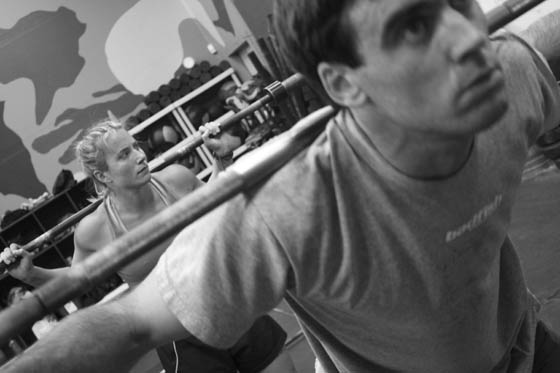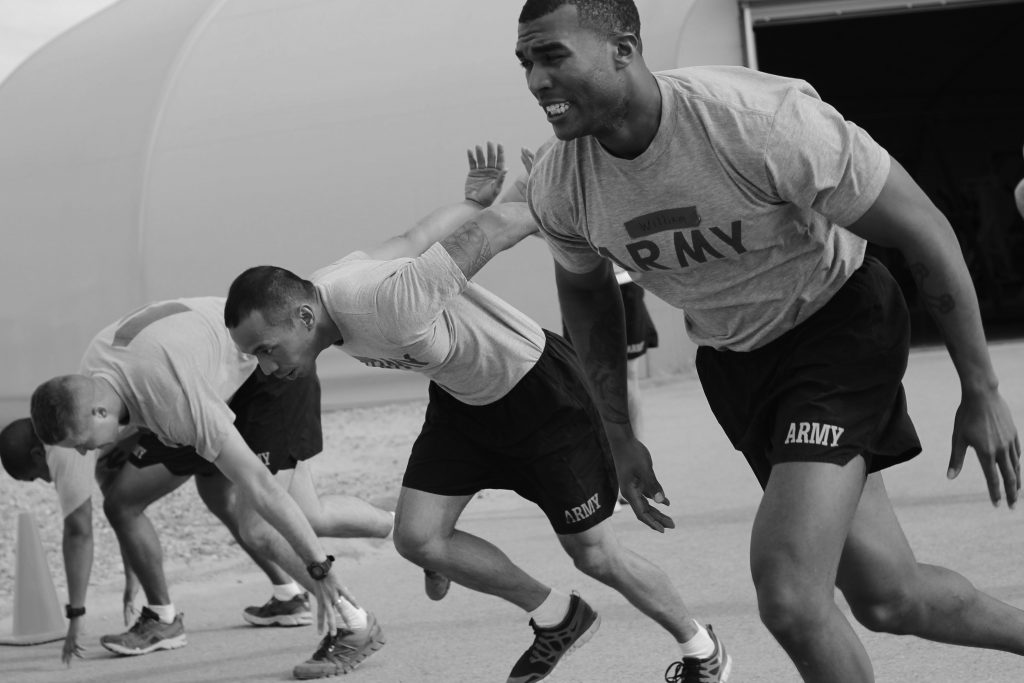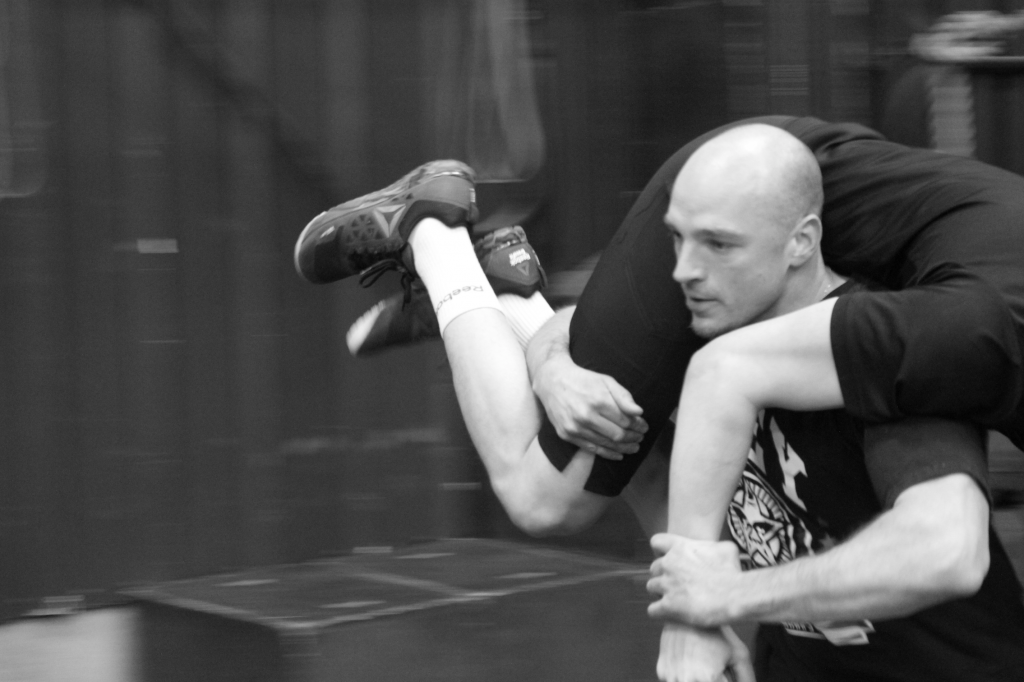QUESTION
Any advice for choosing a program that is 3 strength sessions per week? I’m trying to find something to combine with 2 days of running/bjj per week.
ANSWER
If you’ve already done this plan, look at the Big 3 + Run Plan. Again, just do the strength work.
– Rob
QUESTION
I am planning on going skiing the week of February 22-29, 2020. I am hoping to be as well prepared as possible for the skiing as it is the only time of year I can go. Overall, I need to improve my general fitness. I only have access to very limited equipment. I would appreciate any advice on which of your plans you would recommend for the next 5-6 months.
ANSWER
In this order ….
– Rob
QUESTION
I’m getting back into lifting for the first time in a long long while. But I am pretty damn determined to get in the best shape. I want to have a plan in place for several months to come so that I am not trying to figure out what’s next every 4 weeks.
Do you have a progression plan or recommendation to link a few programs together?
It looks like based on review and methodology, Rat 6 is a good place to start.
ANSWER
If you’re primarily concerned about strength, and not around fitness, I’d recommend the plans/order in the
MTI Strength Packet – which is 7 strength-focused training plans beginning with TLU Strength. You can purchase these plans individually. Also – most include some short work capacity.
This also assumes you know your way around the weight room, and have been doing some type of training. If not, start our stuff with the
Bodyweight Foundation Training Plan, then move to the plans in the Strength Packet.
– Rob
QUESTION
Ive been looking for a good JTF2 (Canada’s version of Delta) selection program. What do you reccomend? I dont know if the demands are any different than delta.
ANSWER
JTF2 – I’ve been asked several times to develop a plan for this but in all these years have not been able to find out enough about the fitness demands of the selection to confidently design a selection-specific plan for it. Delta selection is super ruck intensive, and our plan reflects that – but I’m not sure JTF2 follows this model.
So …. I’ve recommended others complete our
Ruck-Based Selection Training Plan for JTF2 – which has plenty of rucking, but also include training for a PFT, running, core strength, and work capacity work for multi-mode team events.
– Rob
QUESTION
I am a CrossFit coach and rugby athlete at Stanford University. I enjoy challenging myself through physical training to see what I am capable of. I have learned a lot from your YouTube videos and I have looked through all your training plans as I begin to train specifically for PJ selection. With 2 years left in school, it seems like the best way I can prepare is to do the Rookie Training Packet followed by the USAF PJ Selection Packet.
I want to maximize my effort and time, would you agree with this plan or is there a different training program you would recommend for someone with average fitness to begin preparing for PJ selection?
ANSWER
PJ Selection is swimming/water-confidence intensive, and most the attrition is at the pool. Becoming confident in the water and dealing with that stress is key.
I’d recommend you follow the plans/order in the
USAF CCT/PJ Training Packet – which begins with the Military OnRamp Training Plan, and concludes with the Selection Plan. It’s 53 weeks of training …. email back on the other side.
– Rob
QUESTION
I am not a LEO or in the military I’m just a dad who wants to get in shape again and improve my overall athleticism. There’s so many programs it can be overwhelming to try and pick one.
ANSWER
The plans/order in our
Country Singer Packet apply MTI’s programming philosophy to programming for civilian athletes. These are what I’d recommend beginning with
Johnny.
– Rob
QUESTION
Is there a program to boost my push-ups and heaves?
ANSWER
– Rob
QUESTION
I’ve been an online member for maybe 6 months now and whilst I haven’t done a program i do use quite a few aspects of your methodology in my own programming and I love your mini-studies especially the frankness.
I’m a 20 year UK Army Officer Vet and now a 4 year reserve officer – Airborne attached to a Royal Marine Commando unit. i picked up CrossFit in ‘12 with the USMC in AFG and then a box opened in my hometown. I’m still a member there but don’t do many classes, mostly open gym. I picked up GJ in 15 and use some of their stuff as well as training at an affiliate near my work in UK.
I train 3-5 times a week, mostly strength and power in the week – 40-60 min sessions after work – and ideally a longer grinder at the weekend, rucking etc (more on this below). i used to run mountain marathons but lost my mojo for running after years of Achilles issues. I’m the fittest officer in my reserve unit (but that ain’t hard!).
I’m 48 and 6ft/87kg, body fat about 14%. I use my fitness pal to keep to 2000cal at 40/30/30 and eat GF and DF and as healthy as i can (although lots of work travel makes this a challenge at times). I do take some extra cals when the body tells me to.
Your article about training in the city for the mountains was very useful and I’d like some advice if you have time.
Back in the day I did a couple of Nordic Classic races (up to 15k) and last year i decided to do the Birkebeiner in Norway as a challenge. (55km and a couple of cheeky climbs). I have a basis of technique and so i trained for it, mostly on the gently rolling hills of Wiltshire, southern UK. I came about 7500/10000 in the race at 6hrs 10 ish which was OK as there were very few Brits there – like handfuls and it’s the Norwegian national sport. I’m going back next year and i want to do better.
I orientated my short sessions to use ski erg for warmups and some power work and I worked strict Pull-up (max 16 reps in my army FT), DL, lunges, BoBs, box jumps, airdyne (150 cal/9min) etc. Some GHD and TTB for core but not loads.
My “favourite” long sessions were:
– 30 rds 500m ski erg/500m run
– 2 hr tyre drag on hilly dirt tracks with poles
– half Mara ski erg
– 7.5km tyre drag to the box then 2 hrs of airdyne/ski erg intervals, then drag home (that one sucked but i hit the wall which i was hoping for)
– light fast rucks such as Highwalk from UKSF selection
– i did one of these endurance workouts most weekends for 3m up to the race
I had 4 days on snow with 3 on the route for recon and some nasty climbing sessions about 6 weeks out. My longest day was 30km and i had covered the second half of the route so I knew what was coming when I got to the mentally tougher stage.
How did the race feel? I felt balaced between upper/core (polling) and lower and I didn’t get injured. I got in the groove (no pun intended) and got on with it. I guess in the end it boiled down to 2 things. Time on the snowy hills. And just plain old cardio endurance.
Maybe I’m answering my own question but apart from “more and harder”, and noting that there are no free lunches, what would you reccommend for next time? Also i was pretty ad-hoc about the progression, i just did a hard workout and thought OK, what next?
I’d love to hear what you think about training for this kind of event and if you want to use me as a guinea pig, I’d be very happy.
ANSWER
You’re doing way too much variety – the vast majority of your training should be on skiing …. I’d recommend roller skis instead of an erg – but it regardless, tire drags, rucking, etc. are not contributing much to your race performance. You need to ski a lot more if you want to maximize your race performance.
I don’t have a 55k plan, but from our stuff, you could do the
50-Mile Ultra Training Plan and replace all the running in the plan with either roller skiing or erg work.
– Rob
QUESTION
First off, thanks for the great resource and training platform. As a former CF coach who did all the programming for our box and a yoga instructor I know how complex programming can be. So thanks for all the effort in building this resource.
I am just beginning my foray into endurance events and I’m interested in following a year long program much like the plan packets you’ve created for various military selection programs.
Is there a sequence of programs you recommend I follow for ultra running? I know you have the 100- and 50-mile programs, but those are too intense to start off with. Also, my target races are in May, 2020 (30 miles) and November 2020 (50 miles).
I’d like to have a solid year programming schedule and welcome any thoughts on which MTI plans I should combine.
ANSWER
One race at a time … with a focus on the 30 miler. By my count there are 33 weeks between no and May 1, 2020. Here’s what I recommend:
Weeks Plan
1-15 Running Improvement Training Plan
16 Total Rest
17-23 Half Marathon Training Plan
24 Total Rest
25-33 Ultra Pre-Season Training Plan (Repeat week 7) – complete directly before your race.
– Rob
QUESTION
I have a couple questions concerning nutrition recommended by your video and Why We Get Fat.
A little but about myself, I am a 27 year old male currently serving in the military and have assignment for screening and selection. I recently completed your humility program while on deployment and have experienced outstanding results toward my physical conditioning goals. When I returned from deployment, I began diving into diet choices and was researching how to eat healthier to further my fitness goals when I stumbled upon your nutrition video and began reading the book you recommend. I jumped on the diet and have noticed almost immediate results, leaning out, and not experiencing any bloating.
However, I have noticed an energy drop throughout the day. I have been on this diet for a short period of time, do your athletes’ energy levels improve over time while on this diet? Also, do you recommend eating rice, or some other carbohydrates besides gels prior to distance rucks or timed run events?
Thank you for the excellent plans and research your company is conducting, many of my colleges are on your training programs and also are experiencing great results. I am starting one of your assessment and selection plans shortly, and look forward to the results from your diet and physical training plan. I appreciate your time.
ANSWER
Energy Drop? Eat an apple or drink some black coffee.
Carbs prior to a ruck or run? Apple and almond butter or banana and almond butter.
– Rob
QUESTION
I have a question about finding the right program for me. I just graduated RASP and am waiting to PCS up to Washington. In the meantime I want to focus on getting stronger and running & rucking faster. My current pt test scores are:
Pushups: 75
Sit-ups: 85
Pull-ups: 18
5 mile: 35:14
12 mile ruck: 2:45
I don’t report to JBLM until February and I’d like to show up being able to run my 5 mile in 31-32 mins and ruck under 2:30. I also want to get overall stronger but not sure if following a traditional weightlifting program is good enough.
What program or combination of programs do you recommend for the goals I have?
Thanks again and I’m looking forward to hearing back!
ANSWER
I’d recommend
Fortitude, which concurrently trains strength (barbell), work capacity, endurance (run, ruck) and chassis integrity.
– Rob
QUESTION
I work as a guide on Svalbard, with hiking, skiing, some glacier travel, and snowmobiling, and because of my work I need to keep fit.
I also go climbing and skiing on my free time.
I need a plan to build my endurance and mountain strength, preferably with two-maybe three of training a week. That training would be between climbing days, and weekends I prefer to go skiing.
What training plan would you recommend?
ANSWER
Mountain Base Helen … complete the plan’s sessions in order. It’s designed to be a 5/6 day/week plan, but you can do 2/3 days/week, just follow the sessions in order.
– Rob
QUESTION
I’m looking for the best ski prep program for me for this coming season. I built and training wall at home and Ive used your ice climbing plan before (loved it, but it destroyed me).
I’m currently closing in on a 70.3 tri at the end of sept and my training has mainly been trail running and mountain biking (apart from open water swims). I feel decent about stamina at the moment but could always be better.
I usually ski around 60-80 days a season with most of it off piste. Mixed in there are about 20 days touring. I ski mainly in Austria, which means the access is good and tours are typically only 2-3 hours. Despite skiing a lot and usually doing a few triathlons in the summer to prep, I still feel weak a lot of times.
So my question is, would you recommend the dry land preseason, backcountry, or something else to get me ready for the season? I’ll be in Lofoten for a while in late April and really want to be in form for that.
Thanks so much for your help.
ANSWER
– Rob
QUESTION
Greetings! I am member of the Air Force Explosive Ordnance Disposal (EOD) community as well as a big fan of your programming. The Air Force is in the process of implementing a job-specific test for my career field, and I wanted to pass along the test definitions and standards in the hopes that you will be able to provide programming specific to preparation for this test.
Two items are attached to this email. One is the formal test definitions, standards, and protocols. The other is acclimation guidance, which is essentially just a set of recommended exercises provided by the Air Force that can be used to prepare for the test; this guidance is not a comprehensive programming plan though.
The test described in the first attachment is designed to supplant both the Air Force’s standard Tier 1 fitness test, (which has been the test used up to this point for continuous fitness monitoring of EOD operators), as well as the old EOD PAST which has been used over just the past few years to begin pre-screening candidates wishing to join our career field. Once members graduate EOD school, they are no longer subject to EOD PAST standards.
This new Tier 2 test will replace both the old tests as a single standard used for both screening candidates, as well as continuously monitoring the fitness of EOD operators. Senior EOD leadership, those in staff positions, and others in non-operational positions/roles will not be required to test for the duration of their tenure in those positions. Only members occupying operational positions/roles will be required to take the Tier 2 test. The test is not scaled by gender, age, or any other factors like the Air Force’s Tier 1 test.
The career field is currently within a one year acclimation period (June 2019 – June 2020) to allow us to prepare for the test. Official testing and scoring will begin after this acclimation period ends. Recently, many EOD flights have begun conducting mock tests to gauge readiness of their units.
Unfortunately, some members, (especially members that entered the career field prior to the EOD PAST entry requirement), are less prepared than others, and since the acclimation guidance provided by the Air Force is largely incomplete, it would be extremely beneficial to have actual programming to use as opposed to just a list of exercises. Many of these members are those that fought at the height of the wars in Afghanistan and Iraq, and are the developers and keepers of much of our modern techniques, tactics, and procedures. It would be a travesty for the Air Force and EOD community to lose them, and it is my hope that by providing them with the tools they need to use this acclimation period wisely, they will continue to be an asset to our career field and our country.
I am confident that any plan developed by Mountain Tactical would be of great benefit, and heavily used, considering the lack of comprehensive preparation guidance provided by the Air Force. I would see to it personally that as many EOD flights as possible were made aware of it, if your team chooses to develop one. Thank you for your time and consideration.
ANSWER
– Rob
QUESTION
I recently subscribed to MTI after a couple years of interest. Currently, I am trying to find a good place to start; I have been inactive for a little over a year, and had a hernia laparoscopic surgery done 2 months ago. I am 5’8 and 140lb. Currently, I would like to build more core strength as it is the weakest area of my body. I would like to avoid any heavy weights and prioritize self body weight strength. Do you have any suggestions as to where to start? Thank you.
ANSWER
– Rob
QUESTION
I am an Army ROTC Cadet, a student at Montana State University, and a lover of MTI. What I’ve seen in the Military On-Ramp plan I purchased has been effective, efficient, and very fun. I fully intend to explore more of your plans as my career progresses.
I would very much like to incorporate MTI into the ROTC curriculum here at my school. Besides already recommending MTI at every turn, the cadet world is stricken with boring, repetitive exercises. Junior-year cadets, like myself, are in charge of creating PT plans for their squads. Since I was a freshman they have been traditionally mundane. In addition, ROTC PT is mandatory 3 days per week, which is not enough to improve beyond basic fitness.
If you could get back to me on 1. The potential of a Cadet Plan for the off-days from mandatory PT, and 2. The best existing plans or exercises with limited equipment to make PT itself more efficient.
I will talk to my cadre here and discuss the idea of using your plans in our curriculum regardless.
Thank you for all you contribute!
ANSWER
The PT cadets could do only the Mon/Wed/Fri sessions. The motivated cadets could do the Tue/Thurs sessions on your own.
– Rob
QUESTION
I just wanted to see what would be my best option for what I’d like to train for. I ride motorcycle trials at an intermediate/advanced level. And being short in height and still advancing in skill level I often have to physically move my bike around (145lbs). Endurance is definitely a factor as well, lots of standing.
If you neer any more info from me let me know.
ANSWER
I don’t have a specific plan for motorcycle trials. From what I do have I’d recommend
Johnny, which is a multi-modal training that concurrently trains strength, work capacity, endurance and chassis integrity (core). This is an intense plan which would transfer well to your sport.
– Rob
QUESTION
I’m currently training up for Ranger school using your Ranger School program. Backing off 8 weeks from my class days puts week 1 next week. I’ve spent rh3 last 2 weeks doing moderately high efforts on the week1 workouts (i.e., 40# then 50# instead of 60# rucks). I am feeling generally good going into week one but am starting to feel the mileage in some lower body aches and pains. Should I execute session 5 and 6 of this pre-week 1 any differently? What about week 1 proper of the 8 week cycle?
ANSWER
Rest the rest of this week, and complete Week 1 of the Ranger School plan as prescribed.
– Rob
QUESTION
I am just starting my career in law enforcement as a reserve at 35. I am NOT in shape and am wanting to get information about a leo fitness program. My question is, will your programs work for a fitness beginner? The problem I have run into with some programs is they assume you already have a level of fitness higher than a beginner. Do your programs show ways to modify so of the exercises for a beginner? I look forward to hearing from you, thank you.
ANSWER
I’d recommend you start our programming with the
Bodyweight Foundation Training Plan. This plan deploys an initial assessment and the follow on progressions are based on the athlete’s incoming fitness level. In this way it automatically “scales” to the incoming fitness of the individual.
– Rob
QUESTION
I’ve been working on the BUDS Packet, and have done the On Ramp & Humility, and instead of going to Valor I felt I personally needed more time spent running since Im a bigger guy (6’3 220lbs) so I started Run Improvement (Week 6-10) to help me more in that area. Just finished week 7. Love it by the way. Once I’m done with this should I go straight into Valor? I just realized it has some similar assessments like what I’m already doing (3 mile run for time), wasn’t sure if you would recommend subbing Valor with something else or not. Thanks for your help.
ANSWER
– Rob
Subscribe to MTI's Newsletter - BETA





